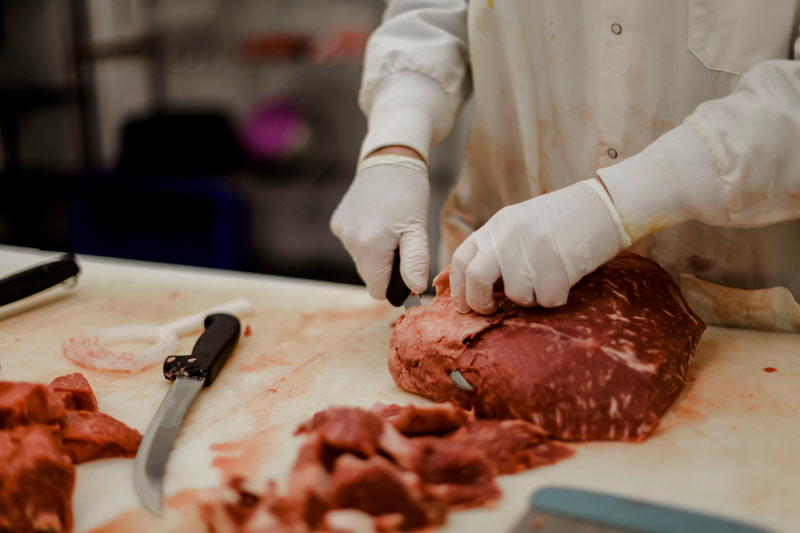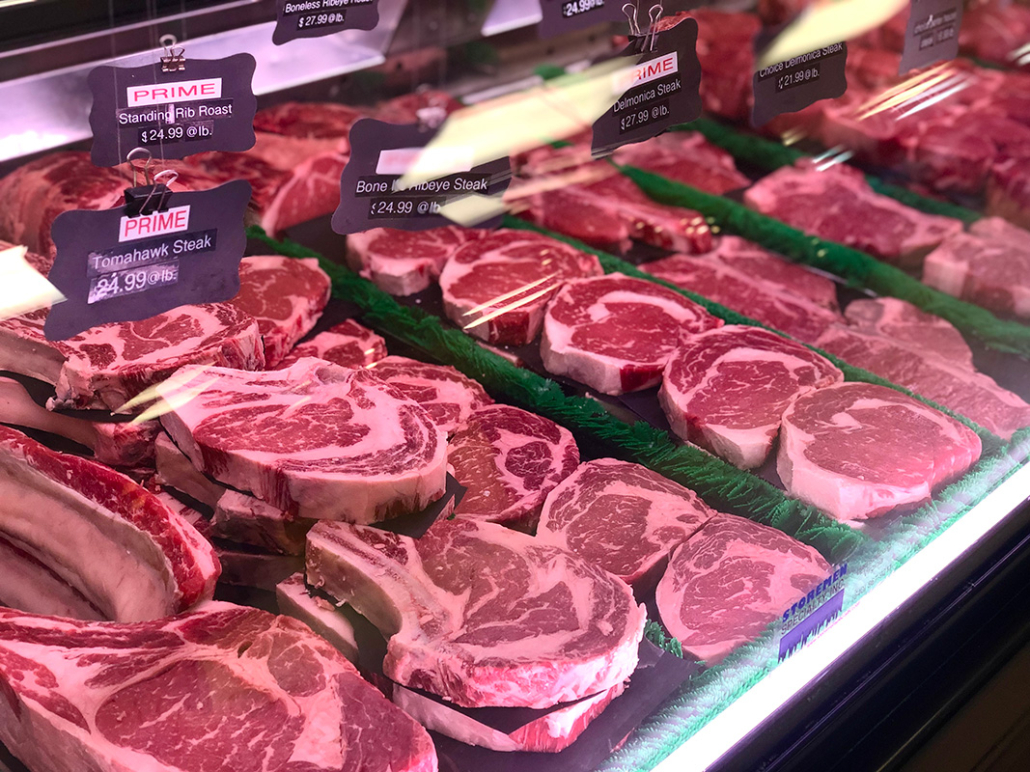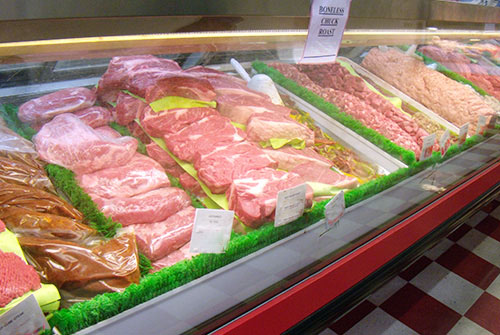Discover the Neighborhood Taste at Bagley Farms Meat Market Edwardsville IL: Fresh and Delicious
Discover the Neighborhood Taste at Bagley Farms Meat Market Edwardsville IL: Fresh and Delicious
Blog Article
Uncover the Art of the Butcher's Cut in a Modern Meat Market
In the ever-evolving landscape of modern-day meat markets, the butcher's cut has actually transcended its typical roots, combining old-time craftsmanship with modern methods. Today's butchers are not just cpus of meat; they are experienced artisans who emphasize sustainability and moral sourcing. Their proficiency in selecting and preparing cuts tailored to details cooking demands uses an exceptional dining experience. Yet, what really establishes the modern butcher apart is their capacity to build a deeper connection between consumers and the origins of their meat. How do these masters balance custom with technology, and what implications does this have for the future of meat usage?
Advancement of Butchery Methods
The advancement of butchery methods mirrors a rich tapestry of advancement and adaptation driven by improvements in modern technology, modifications in customer demand, and a deeper understanding of meat science. Historically, butchery was a craft passed down via generations, with techniques developed over centuries to optimize yield and flavor. The industrial change ushered in mechanization, changing conventional practices and allowing large-scale processing.
The mid-20th century saw butchery methods additionally improved by scientific insights right into muscle biology and meat aging, improving both inflammation and taste. Developments like vacuum cleaner product packaging and refrigeration extended item shelf-life, permitting butchers to expand offerings and enhance quality assurance. This period additionally marked the surge of specialized tools, such as band saws and meat slicers, which raised accuracy and efficiency in meat processing.

Computerized systems currently aid in monitoring animal provenance and optimizing cuts to fulfill certain client preferences. Furthermore, a rebirth in artisanal butchery has actually emerged, mixing standard skills with contemporary understanding to provide to consumers seeking moral and sustainable meat choices.
Comprehending Meat Cuts
Comprehending the ins and outs of meat cuts is crucial for both butchers and customers looking for high quality and value. Each cut originates from a different component of the pet, giving unique tastes, structures, and cooking methods - bagley farms meat market edwardsville il. Mastery of these differences not just boosts culinary experiences but also makes best use of the energy of each carcass. For butchers, precise cuts mirror skill and respect for the craft, ensuring marginal waste and optimal return.

Recognizing muscular tissue structure is vital; muscle mass used extra regularly by the animal often tend to be harder and are best suited for slow cooking techniques, while less-used muscle mass, like those located in the loin, are a lot more tender and suitable for cooking or roasting. Experience with these distinctions empowers customers to make informed options, improving their cooking undertakings.
Selecting High Quality Meat
Picking the appropriate meat includes more than simply selecting a visually attractive item from webpage the screen. bagley farms meat market edwardsville il. The art of selecting high quality meat requires a discerning eye and understanding of particular qualities that indicate quality and quality. To start with, focus on the shade; beef must have a brilliant, cherry-red hue, while lamb must display a soft pink tone, and pork a light pink. This suggests the meat is fresh and hasn't been subjected to oxygen for as well long.
Second of all, consider the marbling, which describes the white streaks of fat within the muscular tissue. Appropriate marbling is a key sign of inflammation and taste, as it melts throughout food preparation, enhancing the meat's juiciness. Remember, higher marbling often correlates with superior quality cuts, such as USDA Prime.
Texture is another crucial factor; meat must feel solid to the touch, not slimy or extremely soft. Additionally, bear in mind the aroma. Fresh meat needs to have a tidy, neutral odor, devoid of any sour or repulsive smells.
Combining Cuts With Food Preparation Approaches

Alternatively, tougher cuts like brisket and chuck roast are abundant in collagen, which damages down right into jelly when cooked gradually. These cuts are perfect my blog for braising or slow-moving roasting, enabling the meat to tenderize gradually and create deep, intricate tastes. Likewise, cuts such as short ribs and pork shoulder fare well with slow-cooking approaches, where extended cooking times transform their durable textures right into succulent meals.
Lamb shanks and oxtail, which require long term food preparation to tenderize, are ideal prospects for stewing or slow-moving simmering. These techniques coax out abundant, passionate flavors while maintaining wetness. By recognizing the unique attributes of each cut, cooks and home cooks alike can raise their culinary productions, guaranteeing each meal is both satisfying and memorable.
The Butcher's Function Today
Navigating the advancing landscape of the modern-day meat market, the butcher's duty today expands beyond plain prep work of cuts. Contemporary butchers are culinary artisans, educators, and supporters for sustainable methods. They connect the gap between the ranch and the fork by making certain ethical sourcing, recognizing animal husbandry, and prioritizing openness in the supply chain. This Homepage shift reflects the expanding customer demand for top quality over quantity, where provenance and pet well-being are critical.
Along with crafting precise cuts, butchers currently involve directly with consumers, using cooking guidance and tailoring options to fit individual requirements and choices. Their proficiency in meat aging, marbling, and taste profiles encourages customers to make educated decisions, boosting their cooking experiences. This individualized service exhibits the butcher's developing role as a relied on expert in the kitchen area.
Additionally, butchers are critical in lessening waste, making use of whole pets to create diverse products such as sausages and stocks. This thorough approach not only appreciates the pet but additionally straightens with modern sustainability objectives. In this means, the contemporary butcher symbolizes both tradition and technology, adjusting to an ever-changing market while maintaining the creativity and stability of their craft.
Conclusion
Proficiency in understanding varied meat cuts and high quality indicators empowers butchers to supply informed suggestions, aligning specific cuts with ideal food preparation techniques. By recognizing historic practices while embracing modern needs, the butcher's duty stays essential in today's advanced meat market.
Report this page